
Providing 25 features to facilitate optimal workflow and user effectiveness, the portable Acuson Maple ultrasound can reportedly be utilized in a variety of clinical settings.
Senior Editor, Diagnostic Imaging

Providing 25 features to facilitate optimal workflow and user effectiveness, the portable Acuson Maple ultrasound can reportedly be utilized in a variety of clinical settings.

Offering a variety of integrated visualization tools, the SiteRite 9 Ultrasound System reportedly enables the insertion of vascular access devices regardless of user experience level.

Utilizing a deep learning-based AI algorithm to differentiate between diagnostic and non-diagnostic quality of prostate MRI facilitated a 10 percent higher specificity rate for diagnosing extraprostatic extension on multiparametric MRI, according to research presented at the recent RSNA conference.
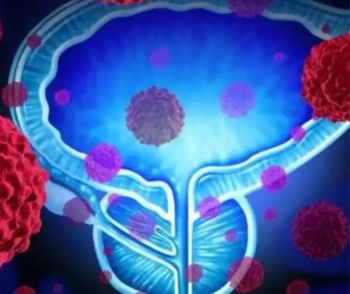
In a newly published meta-analysis of 24 studies, researchers noted that the PSMA PET radiotracer 18F PSMA-1007 may provide more benefit than 68Ga Ga-PSMA-11 for primary staging of patients with prostate cancer and detection of local lesion recurrence, but also has drawbacks with higher liver uptake and multiple reports of false positive bone lesions.

Offering an all-in-one platform of artificial intelligence (AI) applications, MyBreastAI Suite reportedly facilitates early breast cancer detection and enhances efficiency with breast imaging workflows.

Consistent adherence to the five most recent mammography screenings prior to a breast cancer diagnosis reduced breast cancer death risk by 72 percent in comparison to women who did not have the mammography screening, according to new research findings presented at the annual Radiological Society of North America (RSNA) conference.

In a recent interview at the annual RSNA conference in Chicago, Richard Heller, MD discussed the impact of reduced reimbursement rates in radiology, the projected CMS conversion factor for 2024, the severity of payment cuts in interventional radiology and the importance of radiologist advocacy.

BrainSpec Core reportedly offers enhanced sensitivity for low-grade gliomas and may facilitate the diagnosis of conditions including Alzheimer’s disease, multiple sclerosis, and epilepsy.

People who smoke marijuana and cigarettes have 12 times the risk for centrilobular emphysema than non-smokers, according to new computed tomography (CT) research presented at the annual Radiological Society of North America (RSNA) conference.
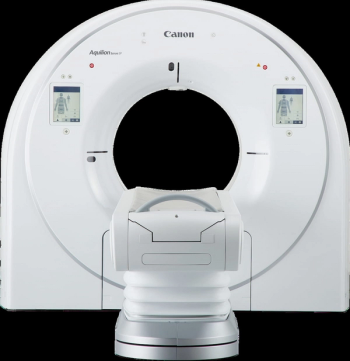
The Aquilion ONE/Insight Edition and Aquilion Serve SP computed tomography (CT) systems reportedly offer enhanced deep learning reconstruction and intuitive workflow efficiencies.
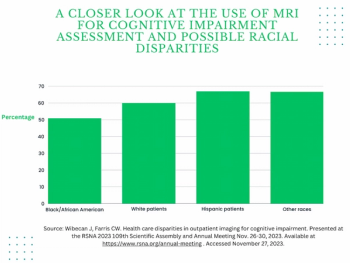
In a four-year study of over 1,600 patients who had outpatient head CTs, head CT angiography and/or brain MRI to assess cognitive impairment, researchers found that Black patients were over 9 percent less likely than White patients and over 16 percent less likely than Hispanic patients to receive brain MRI.

In a recent interview about President Biden’s recent executive order on artificial intelligence (AI), Morris Panner, the president of Intelerad Medical Systems, shared his concerns that the executive order, while well-intentioned, may wind up stifling innovation and the continued evolution of AI in radiology.

With algorithms utilized in aerospace technology, the CT LVAS software reportedly provides enhanced assessment of regional airflow and lung ventilation.
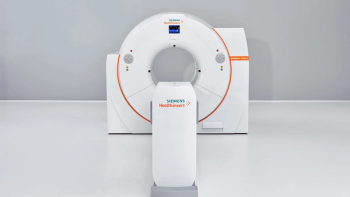
The Biograph Vision.X positron emission tomography/computed tomography (PET/CT) reportedly offers an industry-leading time of flight (TOF) and detector technology that facilitates the diagnosis of smaller lesions.

Artificial intelligence (AI) assessments of chest X-rays identified 28 percent of a 17,000 plus cohort of never-smokers as being at high-risk for lung cancer, according to research to be presented at the annual Radiological Society of North America (RSNA) conference next week.

Pixyl.Neuro reportedly leverages generative artificial intelligence (AI) technology to accelerate brain MRI assessment and improve early detection of abnormal atrophy.

Through assessment of diffusion tensor MRI of the brain, a new AI system reportedly offers a 97 percent sensitivity rate in diagnosing autism in children between two to four years of age, according to research to be presented at the annual Radiological Society of North America (RSNA) conference next week.

Utilizing computed tomography (CT) guidance, researchers have found that performing a minimally invasive anesthetic injection into the stellate ganglia may help address parosmia due to COVID-19, according to study results that will be presented at the annual Radiological Society of North America (RSNA) conference next week.
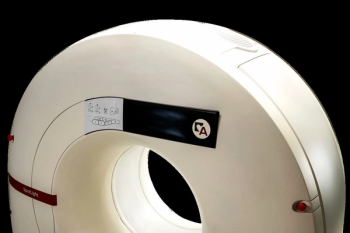
The artificial intelligence (AI)-powered technology reportedly offers decreased noise magnitude while enhancing image reconstruction for cardiovascular computed tomography (CT) scanners.

Performing computed tomography pulmonary angiography (CTPA) with a high-pitch photon counting detector (PCD) offers enhanced signal-to-noise ratio (SNR) and contrast-to-noise ratio (CNR) at a reduced radiation dose in comparison to employing an energy-integrating detector (EID), according to new research.

Fifty-seven percent of patients with prostate cancer diagnosed with osseous metastases on bone scans had negative findings on PSMA PET imaging, according to findings from an international multicenter comparative study.

Offering a combination of simplified and personalized scanning for patients at significantly lower lifecycle costs than other dual-source CT systems, the Somatom Pro.Pulse may be a viable option for smaller rural facilities and outpatient imaging centers.

Combining enhanced imaging capabilities, workflow efficiencies and artificial intelligence (AI)-enabled technology to improve the diagnosis and management of health conditions in women, Samsung has launched the V6 ultrasound system.

In findings from an enriched cohort of asymptomatic patients with screening-detected abnormalities, researchers found that contrast-enhanced mammography (CEM) was superior to conventional mammography and offered equivalent detection of breast cancer in comparison to breast MRI and abbreviated breast MRI.

Providing automated brain volume calculations based on MRI images, NeuroShield’s artificial intelligence (AI)-powered technology may help facilitate treatment for neurodegenerative conditions ranging from Alzheimer’s disease to epilepsy.

Lunit Insight DBT may facilitate improved detection and efficiency for radiologists interpreting digital breast tomosynthesis images.

For patients who had a complete metabolic response to radiation treatment for head and neck cancer, the authors of a recent study found that surveillance imaging with PET/CT, MRI or CT did not improve outcomes in comparison to expectant management.

Catch up on the top radiology content of the past week.

Noting that initial imaging sensitivity is a key factor in cost-effectiveness for patients who do not require acute treatment for dizziness, researchers found that specialized MRI (including multiplanar high-resolution DWI) provided the most benefit in a comparative trial of neuroimaging modalities.

Mammography-based artificial intelligence (AI) models demonstrated an 11 percent higher median AUC for predicting breast cancer than traditional clinical risk factors, according to a new systematic review of 16 retrospective studies.